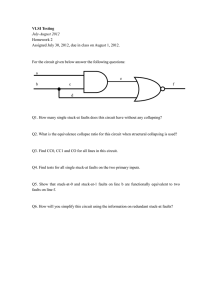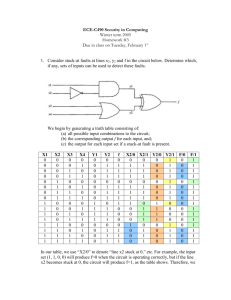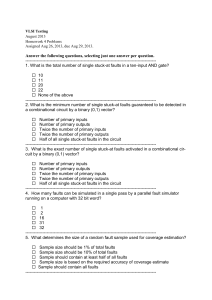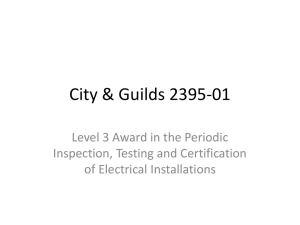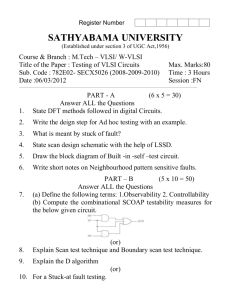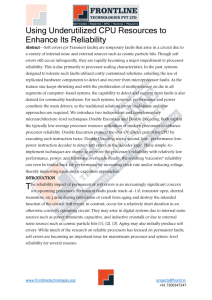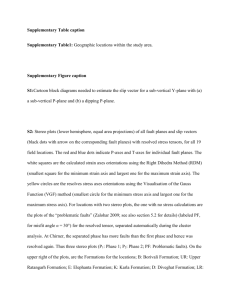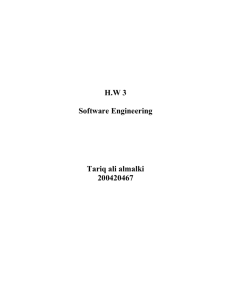ECE 271 Homework #7 PROBLEM #5 HAS BEEN CORRECTED (1
advertisement
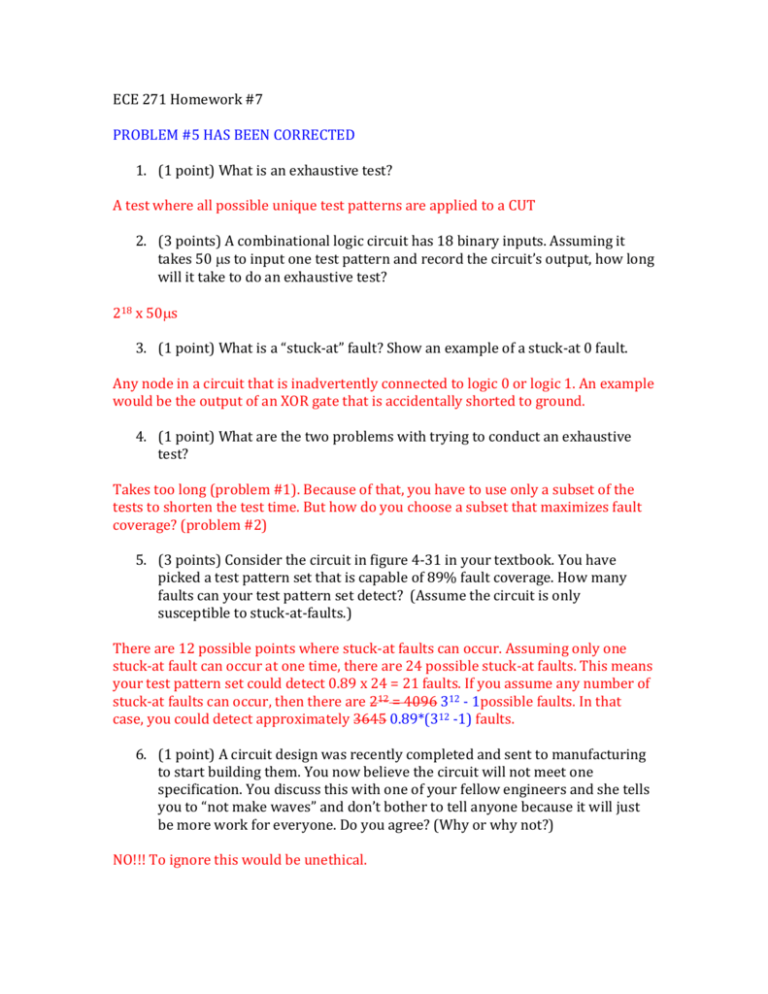
ECE 271 Homework #7 PROBLEM #5 HAS BEEN CORRECTED 1. (1 point) What is an exhaustive test? A test where all possible unique test patterns are applied to a CUT 2. (3 points) A combinational logic circuit has 18 binary inputs. Assuming it takes 50 s to input one test pattern and record the circuit’s output, how long will it take to do an exhaustive test? 218 x 50s 3. (1 point) What is a “stuck-at” fault? Show an example of a stuck-at 0 fault. Any node in a circuit that is inadvertently connected to logic 0 or logic 1. An example would be the output of an XOR gate that is accidentally shorted to ground. 4. (1 point) What are the two problems with trying to conduct an exhaustive test? Takes too long (problem #1). Because of that, you have to use only a subset of the tests to shorten the test time. But how do you choose a subset that maximizes fault coverage? (problem #2) 5. (3 points) Consider the circuit in figure 4-31 in your textbook. You have picked a test pattern set that is capable of 89% fault coverage. How many faults can your test pattern set detect? (Assume the circuit is only susceptible to stuck-at-faults.) There are 12 possible points where stuck-at faults can occur. Assuming only one stuck-at fault can occur at one time, there are 24 possible stuck-at faults. This means your test pattern set could detect 0.89 x 24 = 21 faults. If you assume any number of stuck-at faults can occur, then there are 212 = 4096 312 - 1possible faults. In that case, you could detect approximately 3645 0.89*(312 -1) faults. 6. (1 point) A circuit design was recently completed and sent to manufacturing to start building them. You now believe the circuit will not meet one specification. You discuss this with one of your fellow engineers and she tells you to “not make waves” and don’t bother to tell anyone because it will just be more work for everyone. Do you agree? (Why or why not?) NO!!! To ignore this would be unethical.
